In keeping with the International Space Elevator Consortium’s (ISEC) theme of “Longer, stronger tethers – 30MYuri or Bust!“, the Space Elevator Conference has assembled an all-star lineup for its Friday, August 12th program. This day of the program is dedicated to stronger tethers and the Guest speakers that have been assembled are simply awesome.
From the University of Cincinnati, home of one of the foremost Carbon Nanotube (CNT) labs in the world, the Space Elevator Conference welcomes Dr. Vesselin Shanov. From Dr. Shanov’s biography:
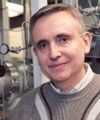 Dr.Vesselin Shanov is an Associate Professor of Chemical and Materials Engineering at the University of Cincinnati. He received his MS in Electronic Materials from the Technological University of Sofia, Bulgaria in 1970. In 1980, he completed his PhD in Solid State Chemistry at the University of Regensburg, Germany and at the Technological University of Sofia, Bulgaria.
Dr.Vesselin Shanov is an Associate Professor of Chemical and Materials Engineering at the University of Cincinnati. He received his MS in Electronic Materials from the Technological University of Sofia, Bulgaria in 1970. In 1980, he completed his PhD in Solid State Chemistry at the University of Regensburg, Germany and at the Technological University of Sofia, Bulgaria.
Dr. Shanov has received several prestigious awards, including the Fulbright Award for Research and Teaching in USA, German Academic Foundation (DAAD) Grants, and the Bulgarian Patent Office Award for Distinguished Patent. He is a member of the Materials Research Society and former President of the Bulgarian Fulbright Alumni Association. Dr. Shanov`s recent breakthrough achievement, accomplished with the help of Dr. Schulz of University of Cincinnati, in growing the longest carbon nanotube arrays has attracted the attention of the scientific community. NSF Special Press Release on this topic.
Dr. Shanov has published 145 papers, 14 patents, 3 books, and has been part of 40 funded proposals including many with NSF, the US NAVY, the US Air Force, and industries. He was selected a “Distinguished Professor” at the Department of CME for the 2006/2007 academic year.
Dr. Shanov co-directs the UC Nanoworld with Dr. Mark Schulz.Nanoworld is a large interdisciplinary teaching and research laboratory located in the College of Engineering. It has unique facilities enabling synthesis, processing, and device fabrication based on nanostructured materials. Nanoworld carries an important mission helping to recruit, excite, and retain the undergraduate students at the UC College of Engineering.
Also from the University of Cincinnati and presenting at the conference is Mr. Mark Haase, a PhD student at the University.
And the Space Elevator Conference is very pleased to announce that Dr. Boris Yakobson from Rice University will also be attending the conference and presenting a paper on CNT strength. From Dr. Yakobson’s biography:
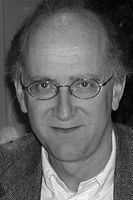 Dr. Yakobson received his PhD from the Russian Academy of Sciences in 1982. He is currently the Karl F. Hasselmann Chair in Engineering, a Professor of Materials Science and Mechanical Engineering and a Professor of Chemistry at Rice University.
Dr. Yakobson received his PhD from the Russian Academy of Sciences in 1982. He is currently the Karl F. Hasselmann Chair in Engineering, a Professor of Materials Science and Mechanical Engineering and a Professor of Chemistry at Rice University.
Professor Yakobson’s research interests are in theory and modeling of structure, kinetics, and properties of materials, derived from both macroscopic and fundamental molecular interactions. Computational methods and simulation are used to visualize and enhance the understanding of underlying physics and to identify the efficient degrees of freedom in complex systems, especially in connecting different length scales of description. He is an editorial board member of the Journal of Nanoparticle Research and a member of the American Physical Society and the Electrochemical Society.
Also presenting from Rice University is Dr. Vasilii Artyukhov.
Additional speakers are scheduled for that day including Mr. Karen Ghazaryan, one of last year’s Honorable Mentions for the Artsutanov prize and Dr. Bryan Laubscher. And, also on Friday is the NASA/Spaceward Strong Tether Challenge – with a prize purse of $2Million!
More details about the Space Elevator Conference can be found on the Conference website, including details for the presentations on Saturday and Sunday (August 13th and 14th). And, until July 10th, you can reserve a place at the conference at the “Early Bird” special rate, a substantial discount off of the full rate. But you have to hurry – the 10th is the absolute deadline for this. After the 10th, you will need to pay the full conference fee.
This is high-powered stuff folks! To my knowledge, this first day of the Space Elevator Conference is the first time, anywhere in the world, that a portion of a conference has been dedicated solely and only to the strength properties of carbon nanotubes (CNTs). Without a strong enough material, the entire idea of a Space Elevator is just an intellectual exercise, so we hope this will be the first in a succession of such gatherings.
I would be remiss in not mentioning that the speakers from the University of Cincinnati and Rice University are attending the conference through the courtesy of the International Space Elevator Consortium (ISEC). This is just another way in which we are working to make this dream a reality and shows you what your membership dollars go for.
Only 36 days to go – I hope to see you all at the Conference!
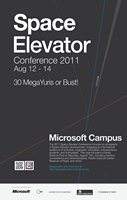 It’s still not too late to register – the 2011 Space Elevator Conference, to be held at the Microsoft Conference Center in Redmond, Washington, is only a few days away. This year’s conference is going to be very good and somewhat different in than in year’s past – an entire day, Friday, is going to be devoted to developments in the CNT arena – developments that are crucial to building a Space Elevator.
It’s still not too late to register – the 2011 Space Elevator Conference, to be held at the Microsoft Conference Center in Redmond, Washington, is only a few days away. This year’s conference is going to be very good and somewhat different in than in year’s past – an entire day, Friday, is going to be devoted to developments in the CNT arena – developments that are crucial to building a Space Elevator.
 As I
As I  This coming Sunday, July 24th, from noon to 1:30pm Pacific time, Dr. Bryan Laubscher will appear on Dr. David Livingstone’s The Space Show. Bryan will talk about the Space Elevator, the upcoming Space Elevator Conference, carbon nanotubes and other related subjects.
This coming Sunday, July 24th, from noon to 1:30pm Pacific time, Dr. Bryan Laubscher will appear on Dr. David Livingstone’s The Space Show. Bryan will talk about the Space Elevator, the upcoming Space Elevator Conference, carbon nanotubes and other related subjects. Tomorrow, Sunday, July 10th, is the last day for the “Early Bird” special rates for the
Tomorrow, Sunday, July 10th, is the last day for the “Early Bird” special rates for the  Dr.Vesselin Shanov is an Associate Professor of Chemical and Materials Engineering at the University of Cincinnati. He received his MS in Electronic Materials from the Technological University of Sofia, Bulgaria in 1970. In 1980, he completed his PhD in Solid State Chemistry at the University of Regensburg, Germany and at the Technological University of Sofia, Bulgaria.
Dr.Vesselin Shanov is an Associate Professor of Chemical and Materials Engineering at the University of Cincinnati. He received his MS in Electronic Materials from the Technological University of Sofia, Bulgaria in 1970. In 1980, he completed his PhD in Solid State Chemistry at the University of Regensburg, Germany and at the Technological University of Sofia, Bulgaria. Dr. Yakobson received his PhD from the Russian Academy of Sciences in 1982. He is currently the Karl F. Hasselmann Chair in Engineering, a Professor of Materials Science and Mechanical Engineering and a Professor of Chemistry at Rice University.
Dr. Yakobson received his PhD from the Russian Academy of Sciences in 1982. He is currently the Karl F. Hasselmann Chair in Engineering, a Professor of Materials Science and Mechanical Engineering and a Professor of Chemistry at Rice University. the latest issue (July, 2011) of the National Geographic Magazine, you will find a short, 2-page article about the Space Elevator, complete with a custom-drawn, concept diagram.
the latest issue (July, 2011) of the National Geographic Magazine, you will find a short, 2-page article about the Space Elevator, complete with a custom-drawn, concept diagram.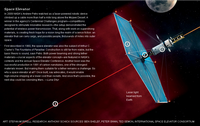
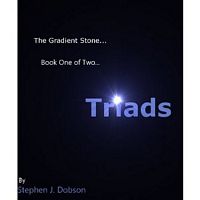 A new book (Triads, The Gradient Stone) themed around a Space Elevator is now available. From the abstract;
A new book (Triads, The Gradient Stone) themed around a Space Elevator is now available. From the abstract;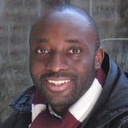 Mr. Uche Ogbuji (follow his Tweets at
Mr. Uche Ogbuji (follow his Tweets at 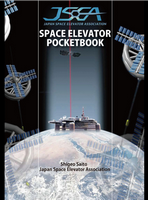 On a related note, I had
On a related note, I had 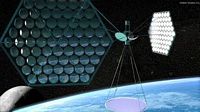 In the may
In the may  The
The 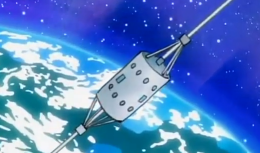 Here’s an animation that just showed up in my FeedDemon reader – 8 animals riding on a Space Elevator, part of a United Nations project:
Here’s an animation that just showed up in my FeedDemon reader – 8 animals riding on a Space Elevator, part of a United Nations project: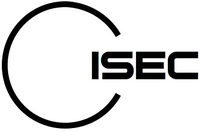 After over a year of work, ISEC is now officially recognized by the IRS as a 501c3 Corporation. What this means is that memberships in ISEC are now fully tax-deductible to the fullest extent allowed by law. And, it is retroactive to our corporate ‘start date’ (November 8th, 2008) so any and all contributions you made before are also deductible.
After over a year of work, ISEC is now officially recognized by the IRS as a 501c3 Corporation. What this means is that memberships in ISEC are now fully tax-deductible to the fullest extent allowed by law. And, it is retroactive to our corporate ‘start date’ (November 8th, 2008) so any and all contributions you made before are also deductible. Once again, all together now;
Once again, all together now;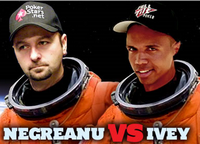 One of the activities we have going on right now at the
One of the activities we have going on right now at the 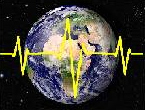 There is a new blog out there that I would like to inform all of my reader’s about – “
There is a new blog out there that I would like to inform all of my reader’s about – “ Previously, I
Previously, I 
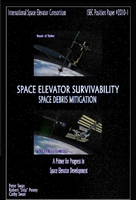
 Shuichi Ohno, the president of the
Shuichi Ohno, the president of the 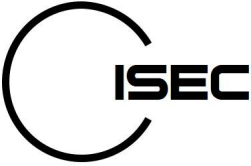 In 2010, ISEC announced the Yuri Artsutanov & Jerome Pearson prizes, prizes established to foster research into Space Elevator related topics. There were no winners in 2010, though we had two papers that qualified for Honorable Mentions in the Artsutanov Prize.
In 2010, ISEC announced the Yuri Artsutanov & Jerome Pearson prizes, prizes established to foster research into Space Elevator related topics. There were no winners in 2010, though we had two papers that qualified for Honorable Mentions in the Artsutanov Prize.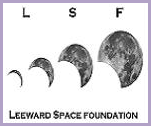 John Lee and his
John Lee and his  I was recently contacted by Tris Lucas of galaxyswan, letting me know that they have created a new Space Elevator song (titled, creatively enough, “Space Elevator”) and posted it on the web.
I was recently contacted by Tris Lucas of galaxyswan, letting me know that they have created a new Space Elevator song (titled, creatively enough, “Space Elevator”) and posted it on the web. ISEC’s
ISEC’s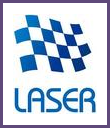 On November 21st, the Japan Space Elevator Association (JSEA) held another of their LASER (Lego bricks Activity and Space Elevator Race) competitions. Mr. Hideyuki Natsume, a Director at JSEA, informs me that 36 teams with more than 100 people participated and that the competition theme was “payload-juice can”.
On November 21st, the Japan Space Elevator Association (JSEA) held another of their LASER (Lego bricks Activity and Space Elevator Race) competitions. Mr. Hideyuki Natsume, a Director at JSEA, informs me that 36 teams with more than 100 people participated and that the competition theme was “payload-juice can”. The LASER website is
The LASER website is  And, no sooner than we have wrapped up the Fourth EuroSpaceward conference than it’s time to remind people about the upcoming
And, no sooner than we have wrapped up the Fourth EuroSpaceward conference than it’s time to remind people about the upcoming  So, the 2010 EuroSpaceward conference is over – it sure went by quickly. It was a very enjoyable conference and Markus Klettner, the Executive Director of EuroSpaceward deserves a lot of credit for the work he did in organizing this event. Dr. Vessilin Shanov remarked to me at the end of the first day that this conference “keeps getting better each year” and I can only agree. Saturday’s presentations were all about CNTs and the state-of-the-art in their development while Sunday was focused specifically on Space Elevator topics. The synergy between the two sessions and their speakers was wonderful to see. Space Elevator people are obviously critically interested in the status of CNT development while the CNT theorists and developers were able to see what “the dreamers” (and I include myself in that group) want to do with the fruits of their efforts.
So, the 2010 EuroSpaceward conference is over – it sure went by quickly. It was a very enjoyable conference and Markus Klettner, the Executive Director of EuroSpaceward deserves a lot of credit for the work he did in organizing this event. Dr. Vessilin Shanov remarked to me at the end of the first day that this conference “keeps getting better each year” and I can only agree. Saturday’s presentations were all about CNTs and the state-of-the-art in their development while Sunday was focused specifically on Space Elevator topics. The synergy between the two sessions and their speakers was wonderful to see. Space Elevator people are obviously critically interested in the status of CNT development while the CNT theorists and developers were able to see what “the dreamers” (and I include myself in that group) want to do with the fruits of their efforts.



 And we’re off. Markus Klettner, Executive Director of EuroSpaceward, is giving the kickoff address. He is talking about why we are having this conference. His rationale is to help humanity become a
And we’re off. Markus Klettner, Executive Director of EuroSpaceward, is giving the kickoff address. He is talking about why we are having this conference. His rationale is to help humanity become a